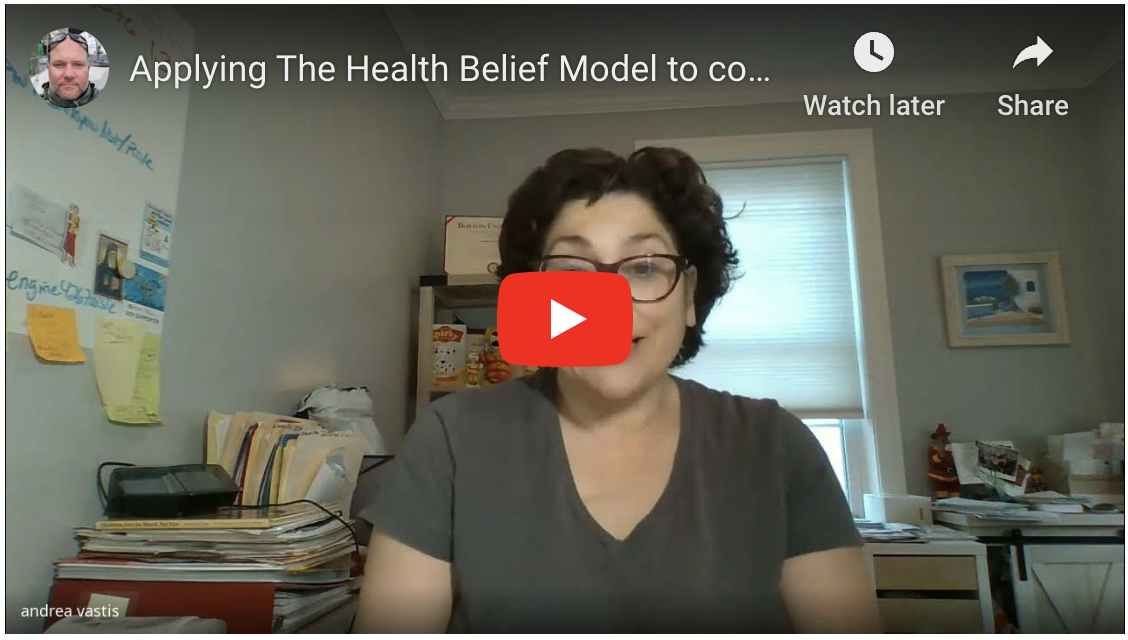Over the last year, I worked with Andrea Vastis, the Senior Director for Public Education at the National Fire Protection Association, to write fire prevention and life safety messages to share on Nextdoor, which you can find in our Content Library.
Early this month, while we were crafting "Winter holiday safety tips," Andrea brought up something I found fascinating, so I asked her to make an impromptu video about The Health Belief Model (HBM) model; watch below.
Given that many communicators who use Nextdoor for Public Agencies are interested in behavior change, Andrea's insights about the model could help you select and promote the most relevant and compelling messages to share with your community.
(NOTE: The NFPA Educational Messages Desk Reference for Fire Service and Fire and Life Safety Educators 2020 Edition is a compendium of the most up-to-date, vetted messaging for a variety of fire and life safety topics. These can be tailored to your community. Download the “EMAC” at www.nfpa.org/emac)
While I am not an expert on behavioral health, there are known limitations to this model, but for Life Safety and Fire Prevention, there clearly is value in the model.
As you craft messages for Nextdoor, I invite you to consider asking yourself - Which constructs may apply to your communities, and how might you mitigate the limitations of the model?
The information below is taken from the Boston University School of Public Health web page.
According to the Boston University School of Public Health, The Health Belief Model (HBM) was developed in the early 1950s by social scientists at the U.S. Public Health Service to understand the failure of people to adopt disease prevention strategies or screening tests for the early detection of disease. Later uses of HBM were for patients' responses to symptoms and compliance with medical treatments. The HBM suggests that a person's belief in a personal threat of an illness or disease, together with a person's belief in the effectiveness of the recommended health behavior or action, will predict the likelihood the person will adopt the behavior.
The HBM derives from psychological and behavioral theory with the foundation that the two components of health-related behavior are 1) the desire to avoid illness or, conversely, get well if already ill; and 2) the belief that a specific health action will prevent or cure illness. Ultimately, an individual's course of action often depends on the person's perceptions of the benefits and barriers related to health behavior. There are six constructs of the HBM.
- Perceived susceptibility - This refers to a person's subjective perception of the risk of acquiring an illness or disease. There is wide variation in a person's feelings of personal vulnerability to an illness or disease.
- Perceived severity - This refers to a person's feelings on the seriousness of contracting an illness or disease (or leaving the illness or disease untreated). There is wide variation in a person's feelings of severity, and often a person considers the medical consequences (e.g., death, disability) and social consequences (e.g., family life, social relationships) when evaluating the severity.
- Perceived benefits - This refers to a person's perception of the effectiveness of various actions available to reduce the threat of illness or disease (or to cure illness or disease). The course of action a person takes in preventing (or curing) illness or disease relies on consideration and evaluation of both perceived susceptibility and perceived benefit, such that the person would accept the recommended health action if it was perceived as beneficial.
- Perceived barriers - This refers to a person's feelings on the obstacles to performing a recommended health action. There is wide variation in a person's feelings of barriers, or impediments, which lead to a cost/benefit analysis. The person weighs the effectiveness of the actions against the perceptions that it may be expensive, dangerous (e.g., side effects), unpleasant (e.g., painful), time-consuming, or inconvenient.
- Cue to action - This is the stimulus needed to trigger the decision-making process to accept a recommended health action. These cues can be internal (e.g., chest pains, wheezing, etc.) or external (e.g., advice from others, illness of family member, newspaper article, etc.).
- Self-efficacy - This refers to the level of a person's confidence in his or her ability to successfully perform a behavior. Self-efficacy is a construct in many behavioral theories as it directly relates to whether a person performs the desired behavior.
Limitations of The Health Belief Model
There are several limitations of the HBM which limit its utility in public health. Limitations of the model include the following:
- It does not account for a person's attitudes, beliefs, or other individual determinants that dictate a person's acceptance of a health behavior.
- It does not account for habitual behaviors and thus may inform the decision-making process to accept a recommended action (e.g., smoking).
- It does not take into account behaviors that are performed for non-health-related reasons, such as social acceptability.
- It does not account for environmental or economic factors that may prohibit or promote the recommended action.
- It assumes that everyone has access to equal amounts of information on the illness or disease.
- It assumes that cues to action are widely prevalent in encouraging people to act and that "health" actions are the main goal in the decision-making process.
The HBM is more descriptive than explanatory and does not suggest a strategy for changing health-related actions. In preventive health behaviors, early studies showed that perceived susceptibility, benefits, and barriers were consistently associated with the desired health behavior; perceived severity was less often associated with the desired health behavior. The individual constructs are useful, depending on the health outcome of interest. Still, for the most effective use of the model, it should be integrated with other models that account for the environmental context and suggest strategies for change.


